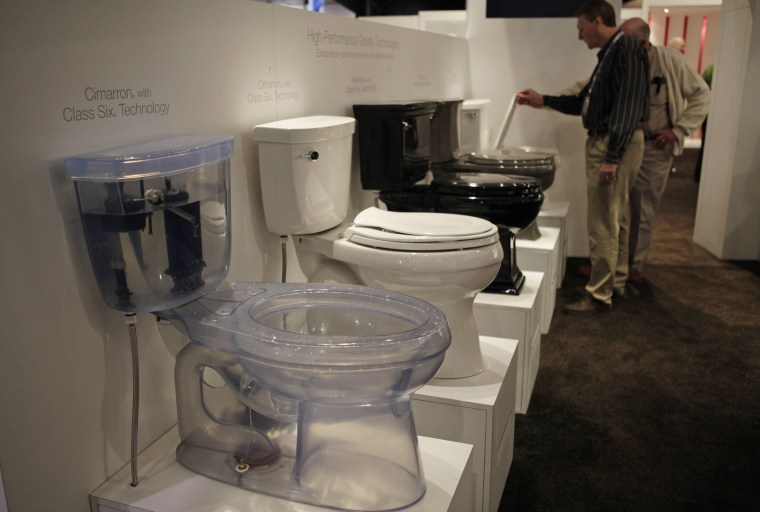America’s grandest game gushes with historic bigness, from OMG catches to national scandals to a litany of urban legends infused by Sunday’s enormity: calamitous halftime flushes, all-time eating binges, and a national epidemic of “Super Flu.”
Some are true, sort of. And some are bunk, completely. But whether rooted in fact or fluff, these Super Bowl myths live on as the Roman numerals pile up.
Like the lore of the stock market “indicator.” Decades ago, a financial expert began talking up a bizarre correlation: If an ex-member of the American Football League won the game, the Dow Jones industrial average would decline during that calendar year, but if an original NFL team took the trophy, the market would surge.
Through the first 31 Super Bowls, that maxim held true 90 percent of the time.
“Now, it’s on a another five-year winning streak,” said Robert Stovall, a strategist for Wood Asset Management in Sarasota, Fla., and “custodian” of the Super Bowl Indicator since 1979. He started tracking the quirky link after reading a newspaper blurb.
“Out of any other gaggle of gurus, that has a better record over the years — it performs better than most portfolio managers,” Stovall said. “Of course, there are more (current) teams that have connections with the old National Football League so it’s slightly loaded in that way, and the market tends to rise more than it falls.”
Super binge
What’s also rising: America’s collective gorging and binging on Super Sunday.
Legend has long held that the game fuels the munching of a near mountain of buffet-table fav guacamole. That chestnut rings true with the California Avocado Commission.
“Avocado consumption has grown,” said Jan DeLyser, vice president of marketing for the trade group. She reports that during last year’s Super Bowl, people gobbled 100.4 million pounds of the vegetable. In contrast, Americans downed 100.1 million pounds of avocados on Cinco de Mayo and 98 million pounds on July 4, 2013.
Beer guzzling also has notched a permanent place in the land of super mythos as it’s often claimed to be the king of drinks during the game.
During Super Bowl time last year — a two-week span ending Feb. 9 — 50 million cases of beverages from the “malt/cider beer category” were sold, reports trend-tracker Nielsen. But that retail number was flat when compared to 2012. What’s more, beer ranks as the “second-largest growth category during the Super Bowl,” said Meg Chari, senior manager of integrated marketing and communications for Nielsen.
The No. 1 growth category among Super Bowl beverages: soda.
Still, all that beer may contribute to the largest, annual sick day for American workers, another legend linked to the game.
Watching football games is the top sports-related reason for employees to call their bosses the next morning to report an illness when they’re not actually under the weather, (at least, not due to germs), according to a 2012 survey conducted by Kronos, a Massachusetts company that solves workforce-related problems.
“As the Super Bowl is the crown jewel of the football season, it’s likely that those fans staying up late to watch the game will drive a spike of absenteeism on Super Bowl Monday,” said Joyce Maroney, director of The Workforce Institute at Kronos. “When we surveyed people in 2008 about their likelihood to miss work related to the Super Bowl, our results indicated that about 1.5 million people were likely to call in sick on Super Bowl Monday and another 4.4 million indicated they’d be likely to arrive late due to their revelry of the night before.”
Flush away, America
Then there’s the Super Bull.
One dusty nugget holds that at halftime, when millions of TV viewers simultaneously flush their toilets, city sewer systems go to pieces. Actually, that claim stretches back to the 1930s when collectively huge flushes during radio commercial breaks did cause small floods, according to Snopes.com, an urban legend buster.
Another exaggeration involves the global TV audience, sometimes called “a billion viewers” in media reports.
“It will be broadcast in more than 180 countries and territories worldwide. We don’t know how many people worldwide will watch it,” said Brian McCarthy, a spokesman for the NFL. “We know that 164 million Americans watched it last year because that’s what Nielsen Media Research reports. We don’t know of an accurate worldwide ‘Nielsen’ figure.”
Neither does Nielsen.
And just how accurate are typical host-city claims of the game as a tourist-revenue machine?
The New York-New Jersey Super Bowl Host Committee reported 400,000 visitors will come for the game, “generating nearly $600 million in spending.”
But the actual amount will likely range between zero and $60 million, estimates Andrew Zimbalist, an economics professor at Smith College in Northampton, Mass., and co-author of “The Sabermetric Revolution.”
“The key is how much displacement is going on between the football fans and normal tourists who come to New York for theater, opera, museums or food?” Zimbaslist asks. “It’s very likely somebody who lives in Pennsylvania or New Hampshire will say, ‘It’s going to be a madhouse down there, crazy fans, lots of drinking and traffic, so let’s go to Boston instead.’
“To that extent that happens, you might have a one-for-one displacement (or, no extra tourists),” said Zimbalist, who was interviewed by phone on Tuesday at his New York City hotel room, which cost him $120 per night — one third what he normally pays. “What that suggests to me is occupancy is low. And this is Super Bowl week! I think there is serious (tourist) displacement.”
